Ramadan is more than a month of fasting—it’s a time of spiritual renewal, community, and creating sacred spaces within our homes. For American Muslim families and those embracing this beautiful tradition, decorating your home thoughtfully can enhance the spiritual atmosphere while honoring cultural heritage. These Ramadan decor ideas blend traditional elements with contemporary American home aesthetics, making your space both spiritually uplifting and visually stunning. Whether you live in a spacious suburban home or a cozy urban apartment, these accessible ideas will help you infuse your living space with Ramadan spirit without overwhelming your budget or daily routine.
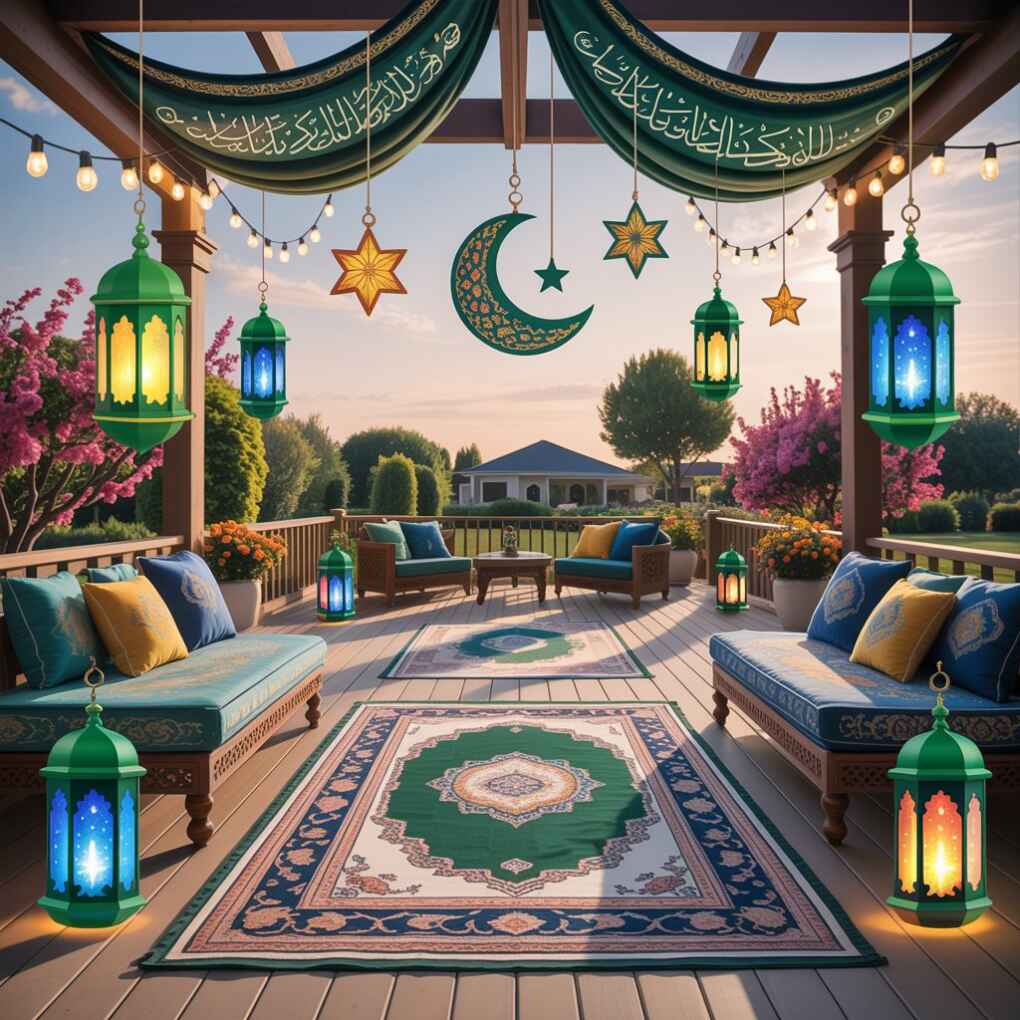
As we prepare for this blessed month, consider how your home environment supports reflection, gratitude, and family connection. The right Ramadan home decoration creates a sanctuary that encourages mindfulness during prayer, meaningful conversations over iftar, and moments of quiet contemplation. These ideas cater specifically to US households, incorporating elements readily available at major retailers while respecting the sacred nature of this holy month. Let’s explore 15 transformative ways to welcome Ramadan into your American home.
1. Traditional Lanterns (Fanoos)
Glowing lanterns casting intricate patterns across walls, creating a warm and spiritual ambiance throughout your living space.
Hanging from ceilings or placed on surfaces, these iconic symbols illuminate your home with cultural significance and soft light.
Fanoos represent the light of faith guiding us through spiritual darkness, transforming ordinary rooms into sacred spaces.
Available in various styles from minimalist metal designs to colorful glass versions, they complement both traditional and modern interiors.
Lanterns, or fanoos, are one of the most recognizable Ramadan decorations worldwide. In Middle Eastern traditions, these illuminated symbols represent guidance and hope during this sacred month. For American homes, consider battery-operated LED versions that provide safe, flameless lighting—perfect for families with children. Place them along staircases, on mantels, or create a stunning entryway display to welcome guests.
Choose lanterns that complement your existing decor: brass finishes work well with modern aesthetics, while colorful glass versions add vibrancy to more traditional spaces. Group different sizes together for visual interest, or create a focal point with a single statement piece. The soft glow creates a serene atmosphere ideal for evening prayers and family gatherings.
“The light of Ramadan illuminates more than just our homes—it lights the path to spiritual growth.” — Islamic Cultural Center of New York
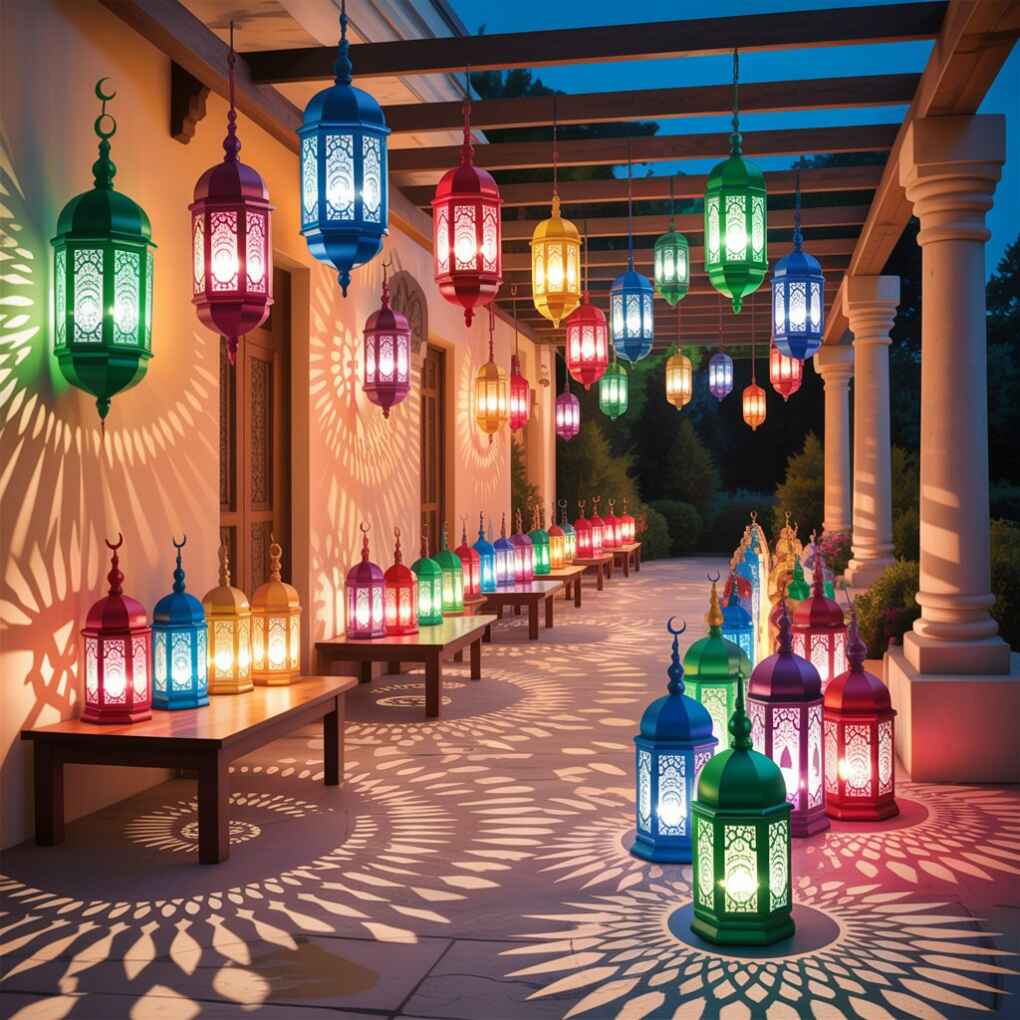
Pro Tip: Check Target or IKEA for affordable lanterns that capture the essence without cultural appropriation. Look for “global market” sections that feature authentic designs.
2. Wall Calligraphy Art
Elegant Arabic script displaying meaningful verses from the Quran or “Ramadan Mubarak” in beautiful calligraphy.
Modern interpretations blend traditional art with contemporary design, making them suitable for any home aesthetic.
These pieces serve as constant reminders of spiritual intentions while adding sophisticated visual elements.
Available as wall decals, framed art, or hand-painted on canvas, they create focal points in living areas.
Islamic calligraphy transforms spiritual messages into visual art that elevates your home’s atmosphere. For US homes, consider versatile pieces that work year-round but gain special significance during Ramadan. Many modern artists create calligraphy that blends Arabic script with English translations, making the spiritual messages accessible to all family members.
Mount calligraphy above your prayer space, in the dining area where families gather for iftar, or in the entryway as a welcoming statement. The spiritual significance of these pieces creates a mindful environment that supports reflection and gratitude throughout the holy month.
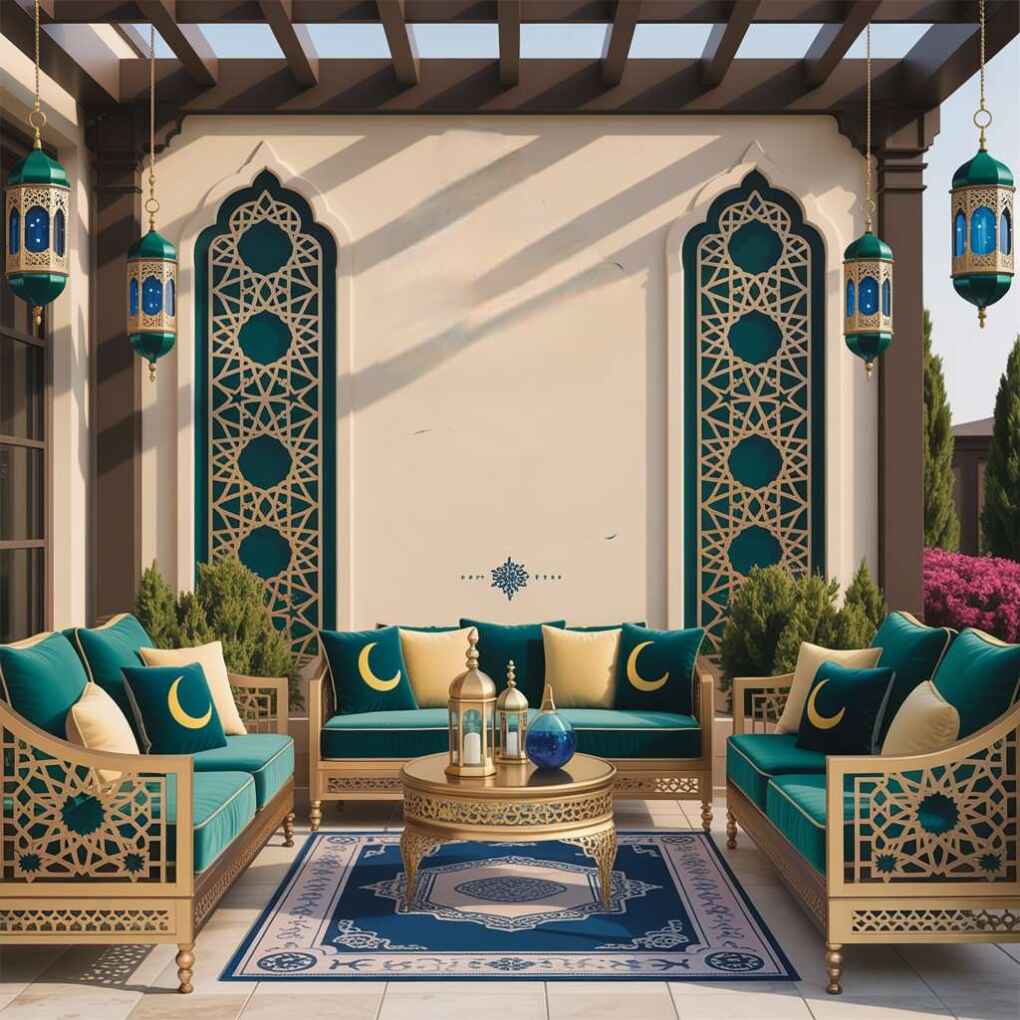
Pro Tip: Create a rotating gallery wall where you can change calligraphy pieces weekly to reflect different Ramadan themes—focusing on patience, gratitude, or charity as the month progresses.
3. Dedicated Prayer Space (Musalla)
A serene corner with prayer rugs, soft lighting, and minimal distractions for focused worship.
Incorporate storage for Quran and prayer beads, keeping the space organized and inviting.
This personal sanctuary should inspire calm and spiritual connection during daily prayers.
Use room dividers or furniture placement to create visual separation from living areas.
Creating a dedicated prayer space in your American home honors the spiritual focus of Ramadan while respecting the practicalities of modern living. This space doesn’t need to be large—a well-defined corner with proper orientation toward the Qibla can become a powerful spiritual anchor. Consider using area rugs or a small mat to define the space visually.
The key is consistency and intentionality. Keep this area free from clutter and distractions, making it a welcoming place for both obligatory prayers and additional Ramadan worship. During Ramadan, this space becomes especially important for pre-dawn suhoor and late-night tarawih prayers.
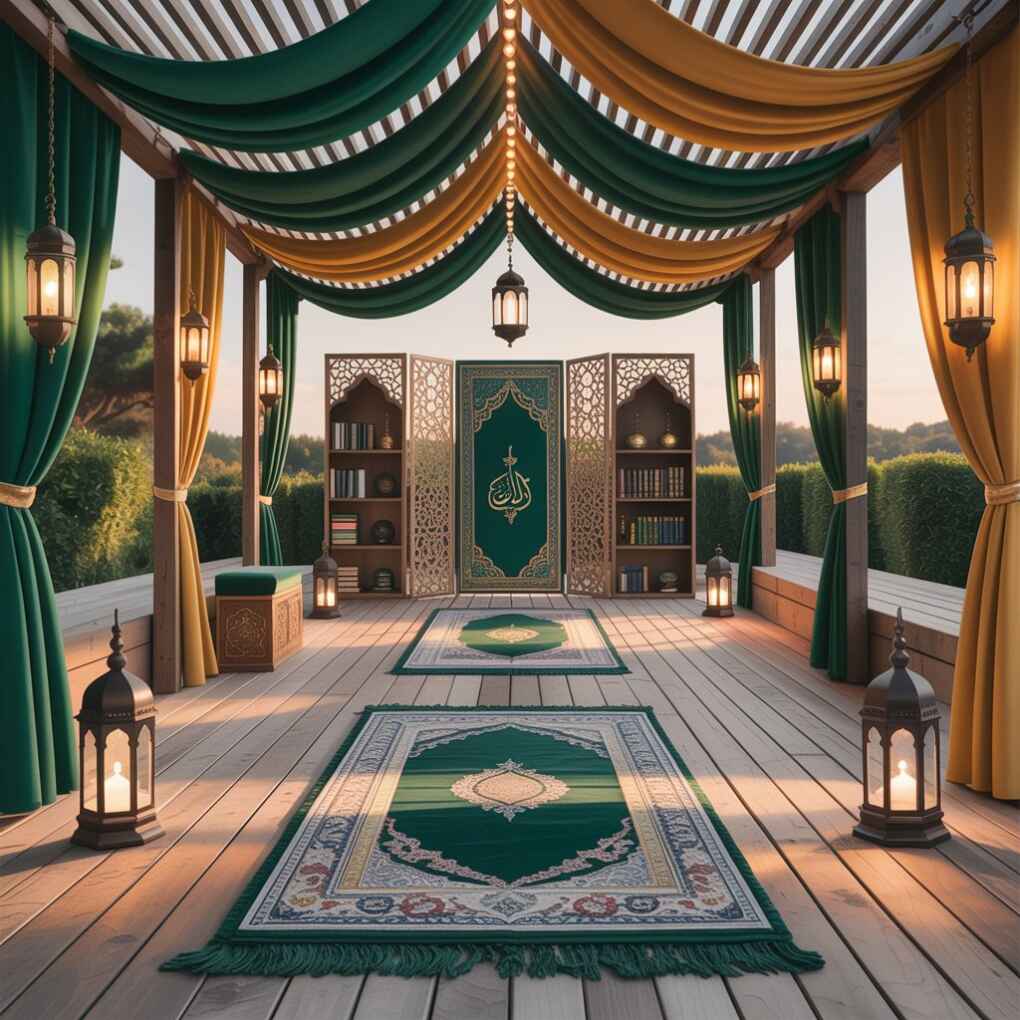
Pro Tip: For apartment dwellers, use a decorative screen or bookshelf to create privacy while maintaining open space. Add a small shelf for your Quran and misbaha (prayer beads).
4. Themed Iftar Table Settings
Elegant table linens in traditional Ramadan colors with coordinated dishware and centerpieces.
Personalized place settings create a special atmosphere for breaking the fast with family.
Incorporate natural elements like dates and water glasses in traditional styles.
Create visual interest with layered textures and complementary colors.
Your iftar table becomes the centerpiece of family connection during Ramadan. Move beyond everyday dining with intentional table settings that honor the significance of breaking fast together. Use special linens, perhaps in deep greens, golds, or blues that reflect traditional Ramadan aesthetics while coordinating with your home’s color scheme.
Consider adding small personal touches—name cards for children, decorative date bowls, or water glasses that reflect cultural traditions. The visual appeal of the table enhances the spiritual experience of sharing food after a day of fasting.
| Element | Traditional Touch | Modern Adaptation |
|---|---|---|
| Tablecloth | Richly patterned fabric | Solid color with subtle texture |
| Centerpiece | Lanterns and dates | Minimalist arrangement with greenery |
| Dishware | Colorful ceramic | White with gold accents |
| Glassware | Traditional etched glasses | Simple tumblers with date motifs |
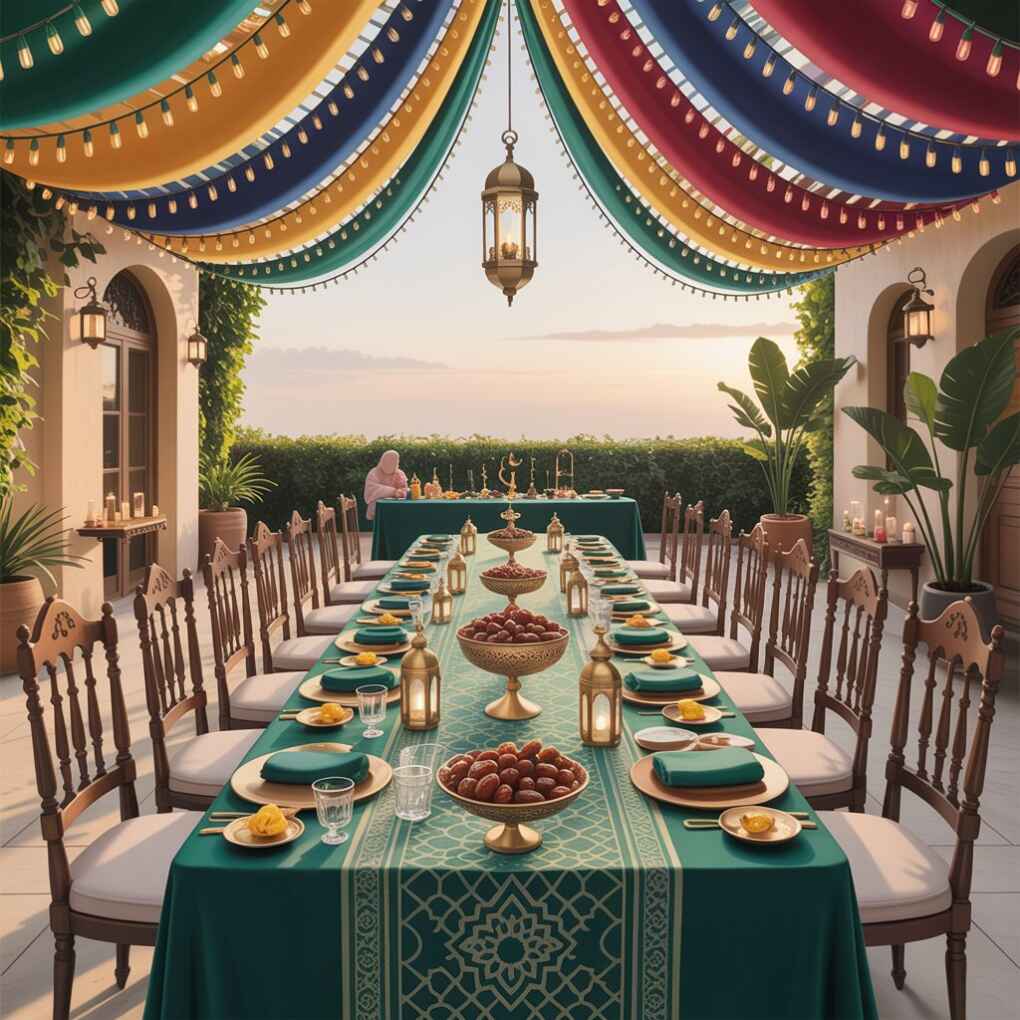
Pro Tip: Use placemats from global retailers like World Market that incorporate Islamic geometric patterns for an authentic touch without overwhelming your existing tableware.
5. String Lights and Twinkling Accents
Soft, warm string lights creating a magical atmosphere throughout living spaces.
Strategically placed to highlight architectural features or create intimate gathering areas.
Battery-operated options provide flexibility for apartments without extensive wiring.
Create visual pathways from entryways to prayer spaces with thoughtful lighting.
String lights offer an accessible way to transform your home’s ambiance without major renovations. The gentle glow mimics the traditional lanterns used during Ramadan while fitting seamlessly into contemporary American interiors. Use them to outline windows, drape across ceilings, or highlight special decor elements.
The psychological impact of soft lighting during Ramadan cannot be overstated—it creates calmness, encourages slowing down, and makes evening gatherings more intimate. For families with young children, the twinkle effect provides a magical element that makes the holy month more engaging.
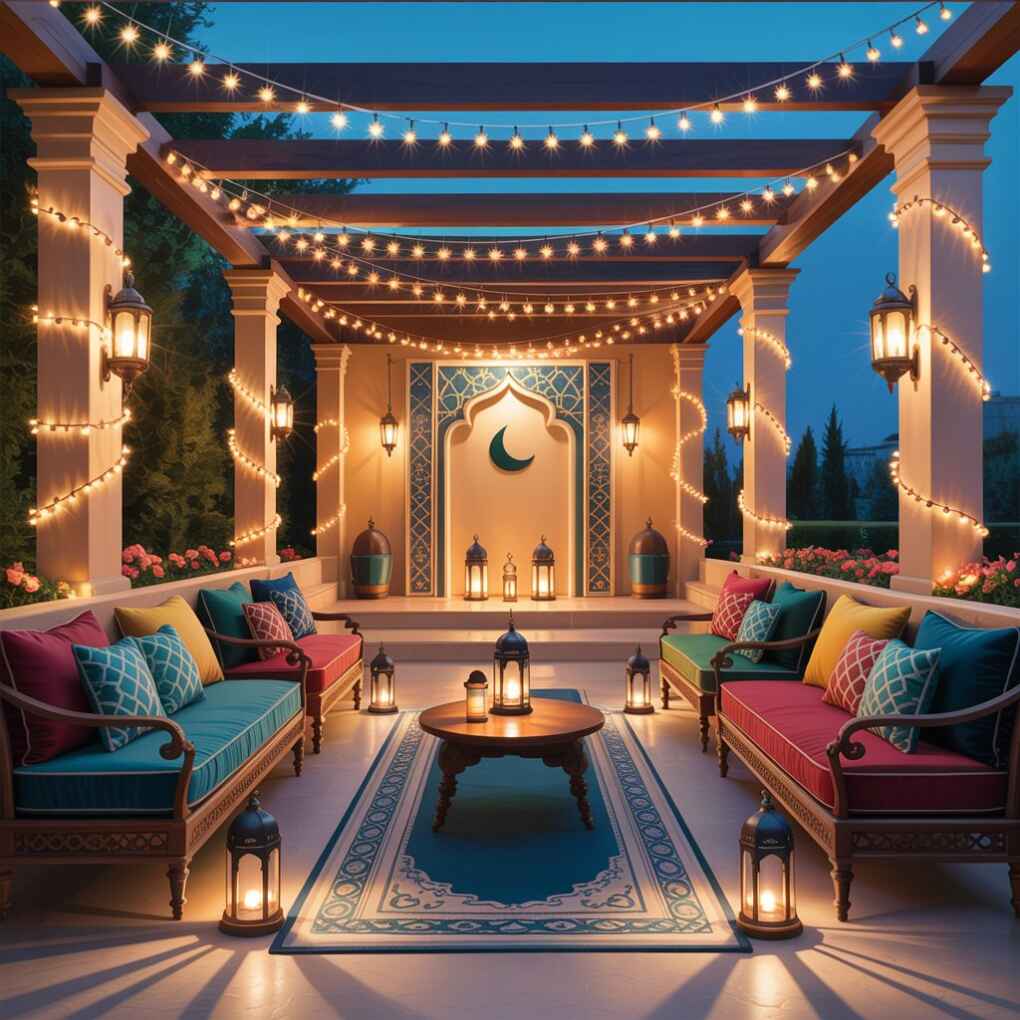
Pro Tip: Look for string lights with a “warm white” setting rather than cool blue tones—they create a more welcoming atmosphere suitable for spiritual reflection.
6. Scented Elements for Spiritual Ambiance
Subtle fragrances from traditional oud, rosewater, or sandalwood creating a sensory connection to Ramadan.
Use diffusers or natural elements like citrus and spices for non-alcoholic scent options.
Avoid overwhelming scents that might distract from spiritual focus.
Strategically place scent sources near entryways and gathering spaces.
Scent plays a powerful role in memory and spiritual connection. During Ramadan, many families incorporate traditional scents that evoke cultural memories and create a distinctive atmosphere. In American homes, use essential oil diffusers with halal-certified oils, or create natural scent stations with citrus slices and spices.
The right fragrance can transform your space without being overpowering—think of it as an invisible layer of decoration that enhances the spiritual atmosphere. Place a small bowl of dried orange slices and cinnamon sticks on your entryway table for a welcoming aroma as family members return home.

Pro Tip: Create a “scent station” with different halal fragrance options so family members can choose what enhances their spiritual experience during Ramadan.
7. Customizable Doormat Welcome
Welcoming “Ramadan Mubarak” or “Eid Mubarak” messages that greet everyone entering your home.
Choose materials that withstand US weather while maintaining visual appeal.
Opt for temporary options that can be easily stored after the holy month.
Position to create an immediate sense of occasion as guests arrive.
Your front door sets the tone for what awaits inside. A Ramadan-themed doormat creates an instant welcome while signaling the special nature of this month. For American homes, look for durable rubber or coir mats that can withstand seasonal weather while displaying meaningful messages.
This small touch has significant impact—it reminds everyone entering your home of the sacred nature of the month before they even step inside. For interfaith families or those with diverse guests, consider more universal designs featuring geometric patterns rather than text.
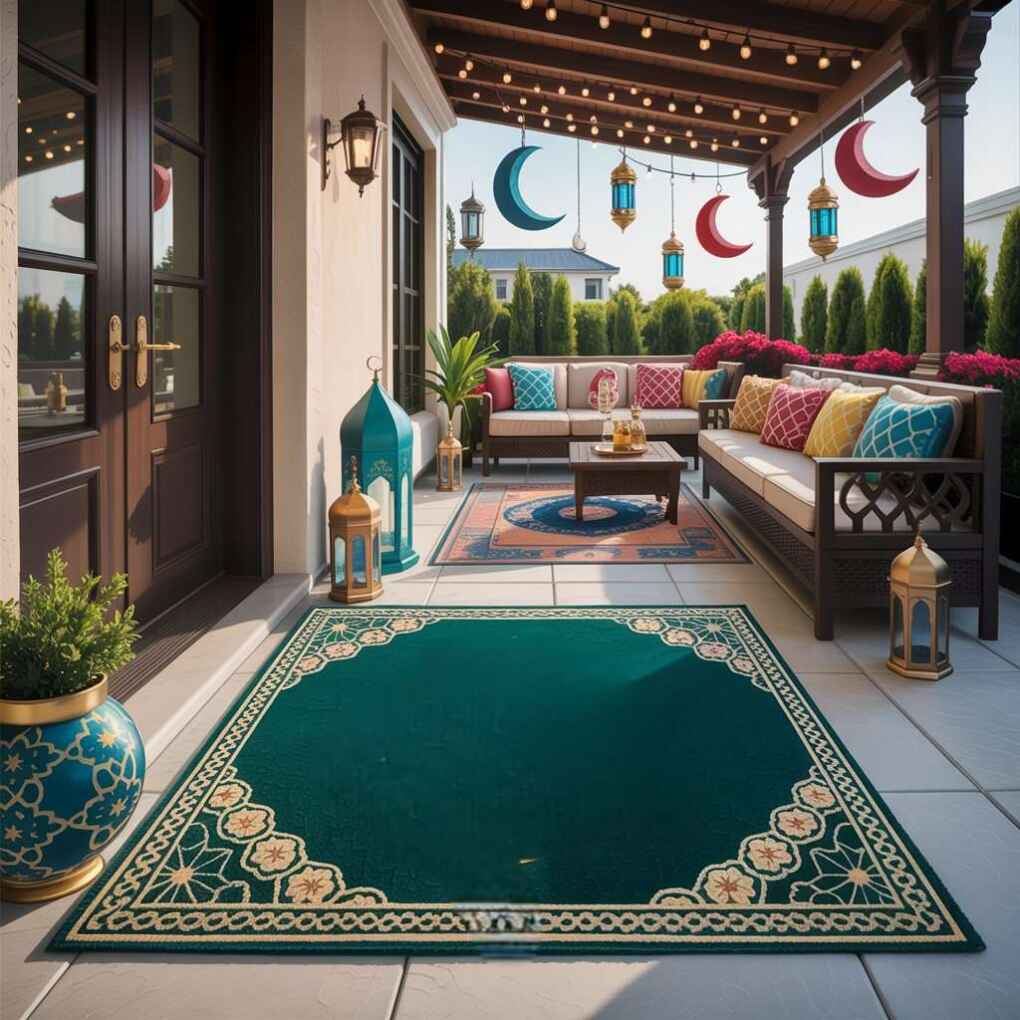
Pro Tip: Use a removable adhesive to secure mats on smooth surfaces, preventing tripping hazards while keeping your message visible.
8. Window Treatments with Meaning
Sheer fabrics allowing light to filter through while maintaining privacy during daylight hours.
Add decorative elements like crescent moon hangings or geometric patterned valances.
Create visual interest while respecting the tradition of modesty in the home.
Coordinate with existing window treatments for a seamless look.
Window treatments during Ramadan serve both practical and spiritual purposes—they filter light for comfortable daytime resting while creating a distinct atmosphere. In US homes, consider adding temporary accents to your existing curtains rather than replacing them entirely.
A simple solution is to add a decorative valance featuring traditional Islamic geometric patterns or crescent moon motifs. These can be easily installed with adhesive hooks or curtain rods, making them perfect for renters or those who prefer not to commit to permanent changes.
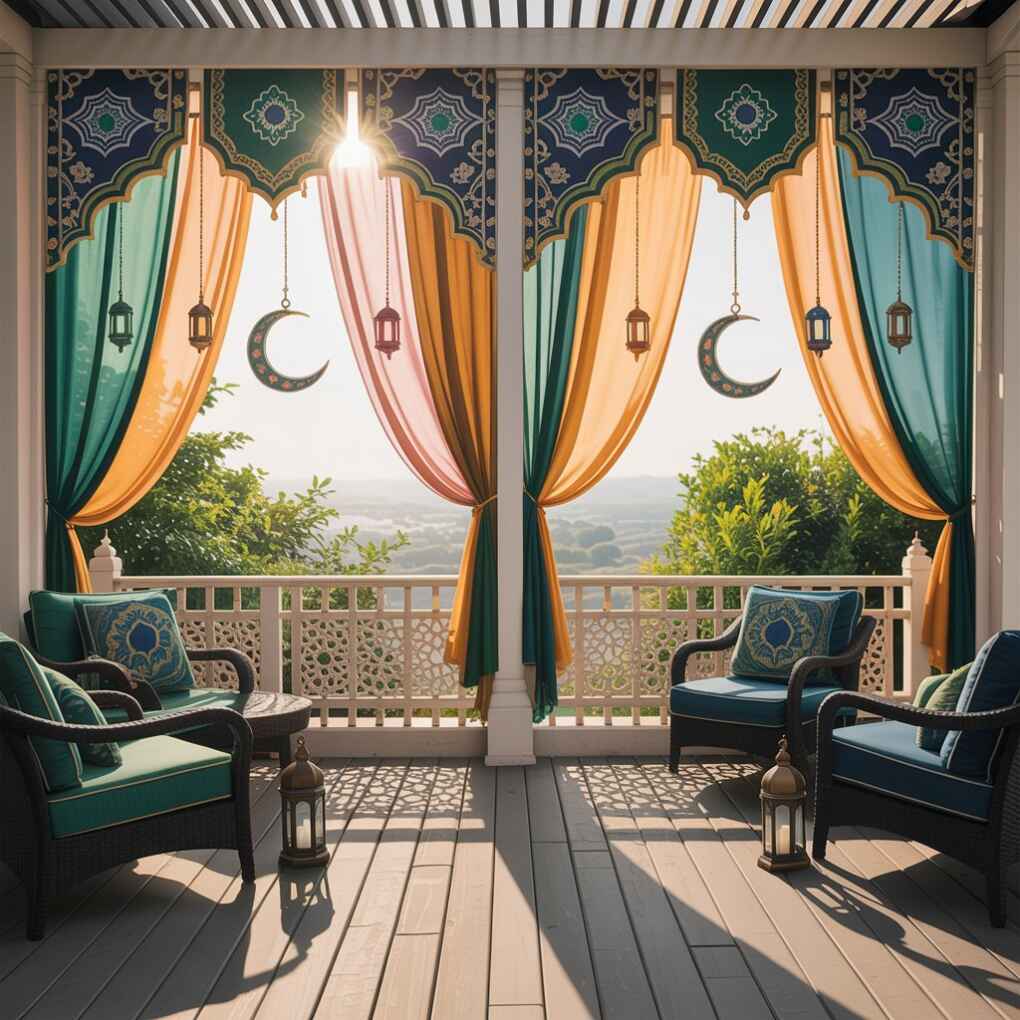
Pro Tip: Layer sheer curtains over existing treatments for a quick transformation that creates the perfect light quality for daytime naps during Ramadan.
9. Centerpiece with Traditional Elements
Elegant arrangements featuring dates, lanterns, and Quranic verses as focal points.
Create visual interest with varying heights and textures for dynamic displays.
Incorporate natural elements that can be used during iftar preparations.
Position strategically for maximum visual impact during evening gatherings.
Your centerpiece serves as the visual anchor of your Ramadan celebrations, particularly during iftar gatherings. Move beyond ordinary table decorations by creating a meaningful arrangement that combines functional and symbolic elements. A simple yet elegant centerpiece might include a bowl of dates, a small lantern, and a framed piece of calligraphy.
The key is balance—your centerpiece should enhance rather than dominate the dining experience. Consider using elements that can be easily incorporated into your iftar meal, making the transition from decoration to sustenance seamless.
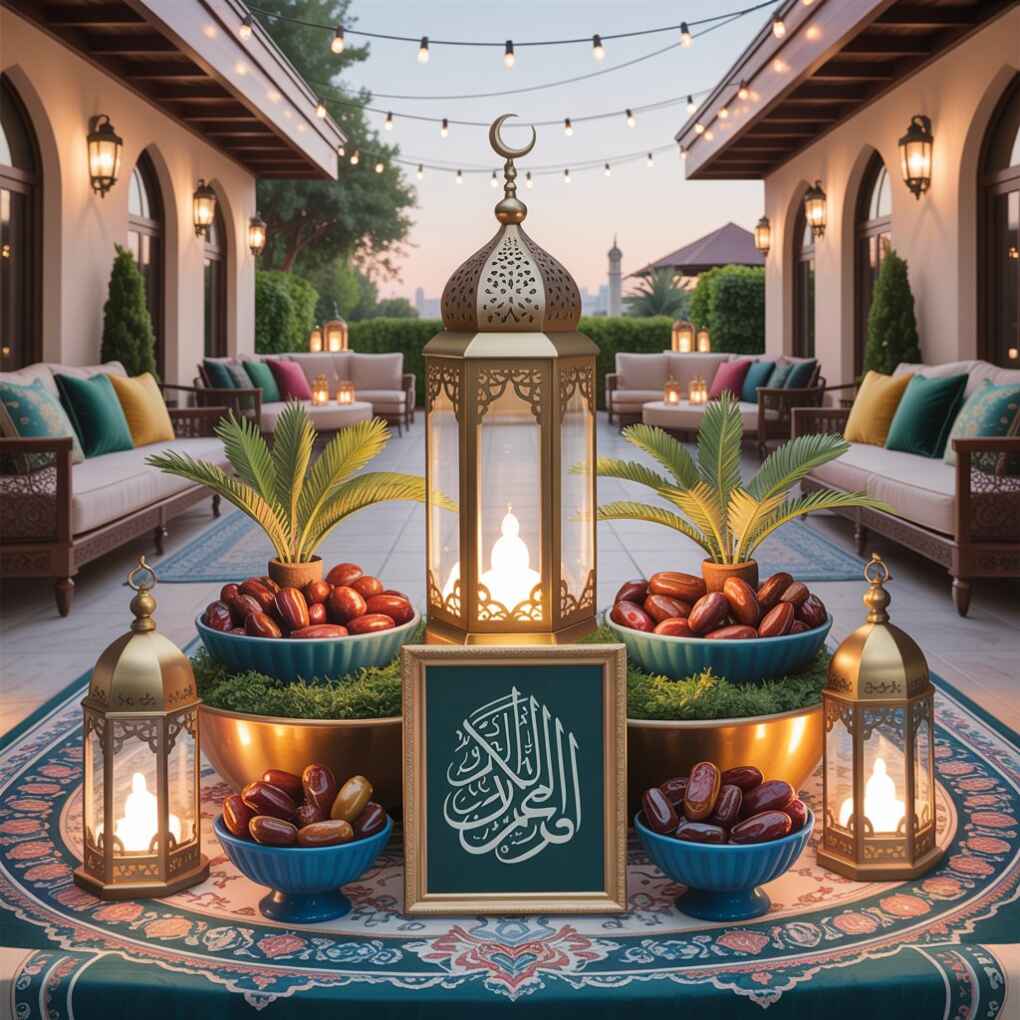
Pro Tip: Create a “living centerpiece” by using potted date palms or small succulents that can be planted in your garden after Ramadan as a lasting symbol.
10. Kids’ Creative Contributions
Children’s artwork featuring Ramadan themes displayed prominently throughout the home.
Involve kids in creating decorations like paper lanterns or fabric banners.
Create a special “Ramadan wall” where all family members can contribute.
Use easily removable adhesive to protect walls while showcasing creations.
Involving children in Ramadan decor creates meaningful connections to their heritage while making the holy month exciting. Simple craft projects like paper lanterns or fabric banners become cherished decorations that transform your space with youthful energy.
Designate a specific wall or area where children’s creations can be displayed throughout Ramadan. This not only makes them feel included but also creates a visual timeline of their spiritual growth year after year.
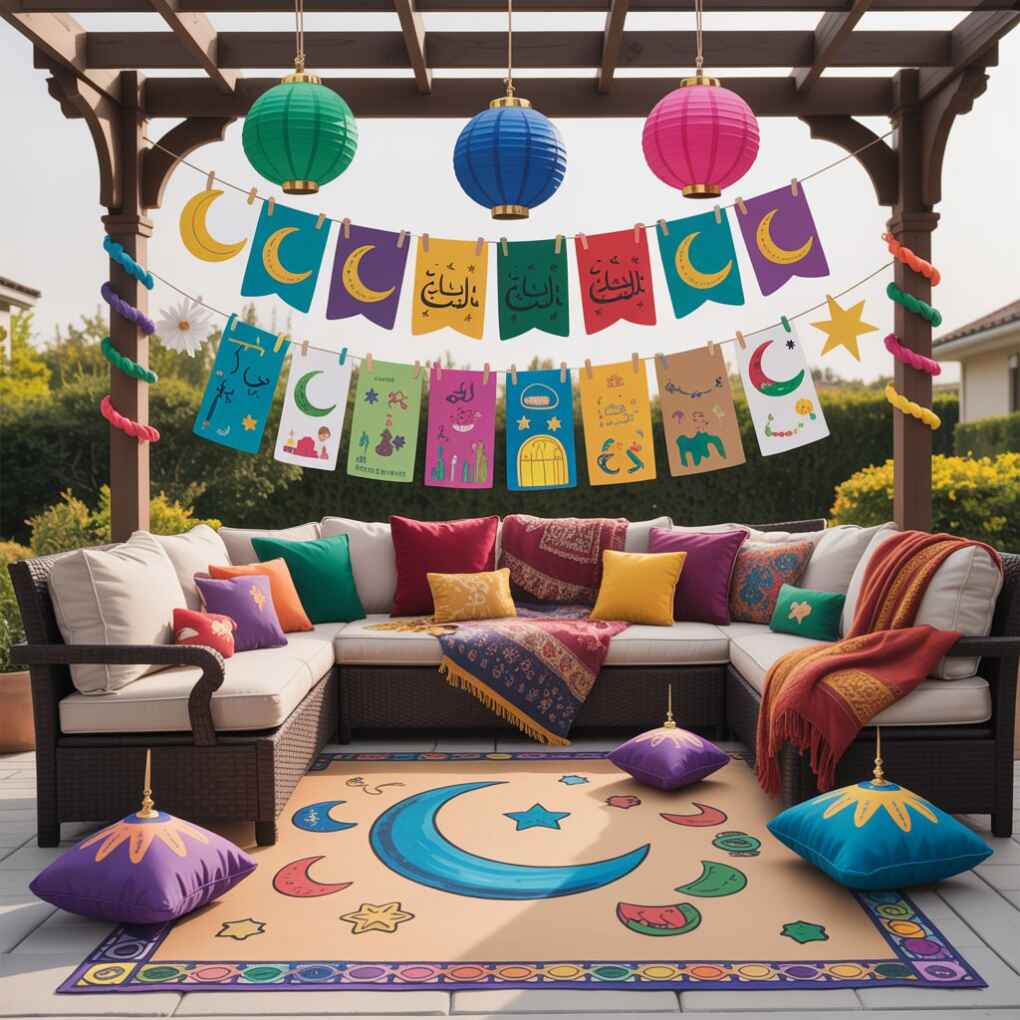
Pro Tip: Use a large roll of kraft paper as a “Ramadan canvas” where children can draw daily, creating a collaborative mural that grows throughout the month.
11. Color Palette with Cultural Significance
Deep greens and golds representing prosperity and spirituality in Islamic tradition.
Subtle accents rather than overwhelming color schemes that maintain year-round versatility.
Coordinate with existing home colors for a cohesive look.
Use textiles and accessories to introduce colors without permanent changes.
Traditional Ramadan colors carry deep symbolism—green represents paradise and prosperity, gold signifies purity and spirituality. For American homes, incorporate these colors through textiles and accessories rather than permanent changes.
A few well-placed accent pillows in traditional colors, a throw blanket draped over the sofa, or decorative bowls on your coffee table can introduce meaningful colors without overwhelming your existing decor. This approach works especially well for renters or those with neutral color schemes.
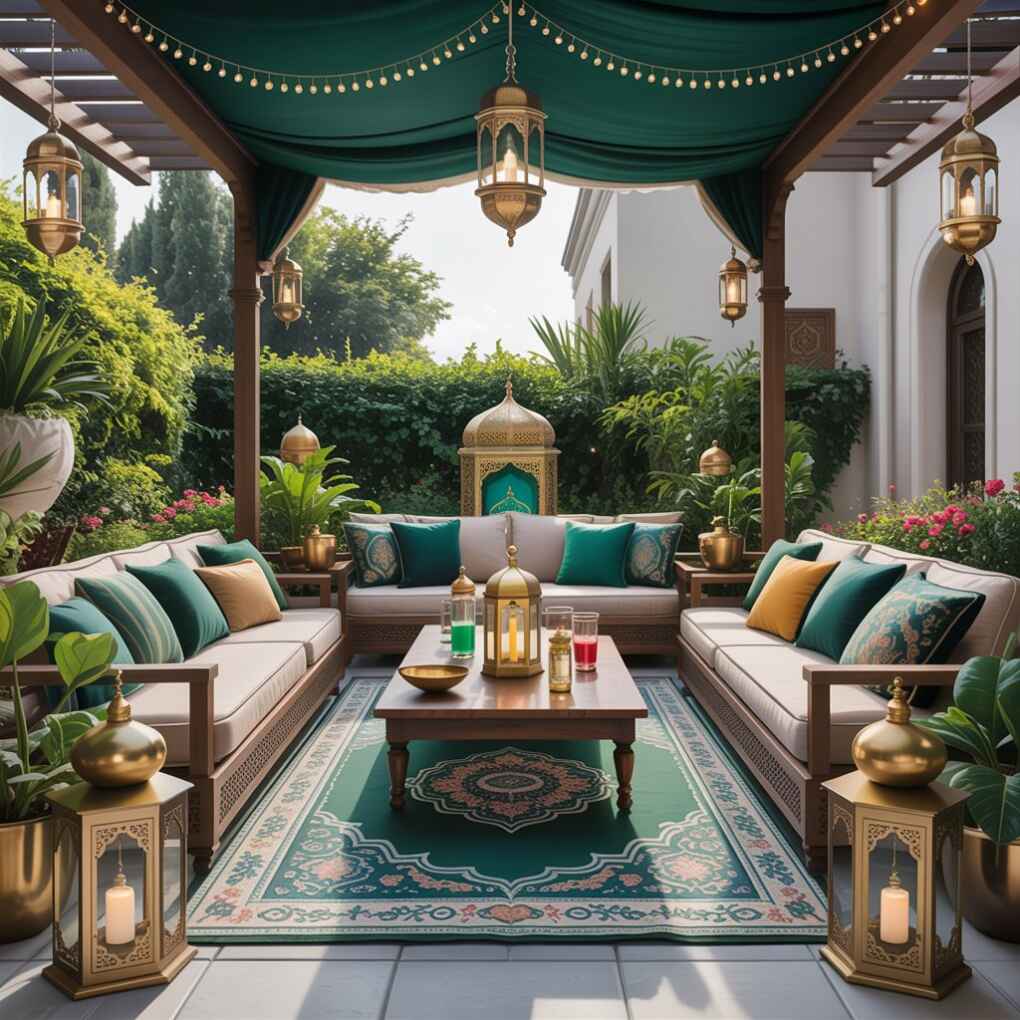
Pro Tip: Create a “color kit” with a few versatile pieces—pillows, a throw, and a table runner—that can be pulled out each Ramadan and stored away afterward.
12. Outdoor Welcome for Community
Subtle outdoor decorations that signal Ramadan’s significance to neighbors and guests.
Use pathway lighting to create a welcoming atmosphere for evening gatherings.
Respect neighborhood guidelines while expressing cultural traditions.
Focus on elements that enhance safety and community connection.
For many American Muslim families, Ramadan is also a time of community building. Thoughtful outdoor decorations signal the holy month’s significance while creating a welcoming atmosphere for neighbors and fellow community members.
Consider pathway lighting that guides guests to your door for iftar gatherings, or a small sign that reads “Ramadan Mubarak” visible from the street. These touches foster connection with your broader community while honoring your traditions.
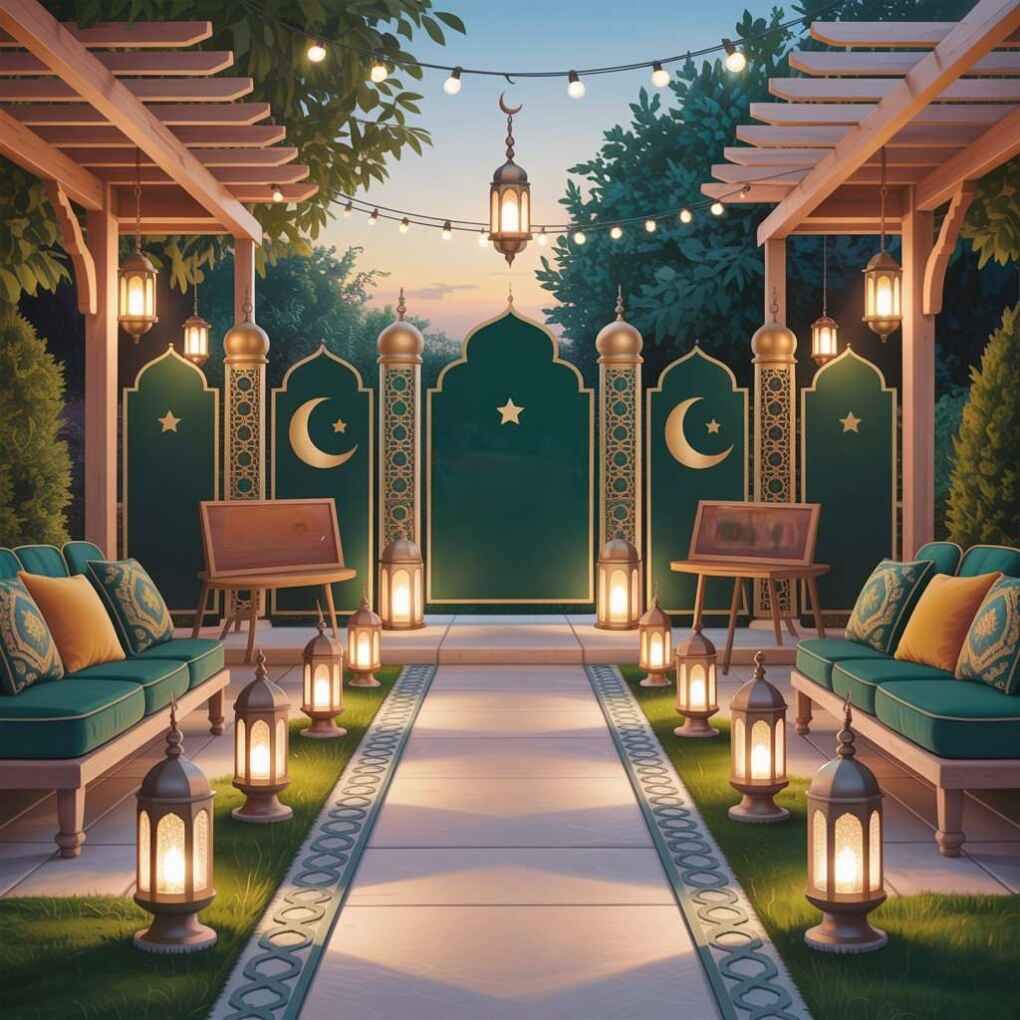
Pro Tip: Check with your HOA before installing decorations to ensure compliance with community guidelines while still expressing your traditions.
13. Digital Decor Elements
Digital displays showing Ramadan countdowns or meaningful verses on tablets and smart frames.
Create a rotating gallery of family memories from past Ramadans.
Use screensavers with calming geometric patterns during downtime.
Ensure digital elements enhance rather than distract from spiritual focus.
In our tech-savvy world, digital elements can complement traditional decor without compromising spiritual intentions. A framed tablet displaying a beautiful Ramadan-themed screensaver can serve as modern wall art, while smart displays can show helpful reminders for prayer times.
The key is intentionality—use technology to support rather than distract from spiritual goals. A digital Quran display near your prayer space or a subtle countdown to Eid can enhance your Ramadan experience without becoming a focal point.
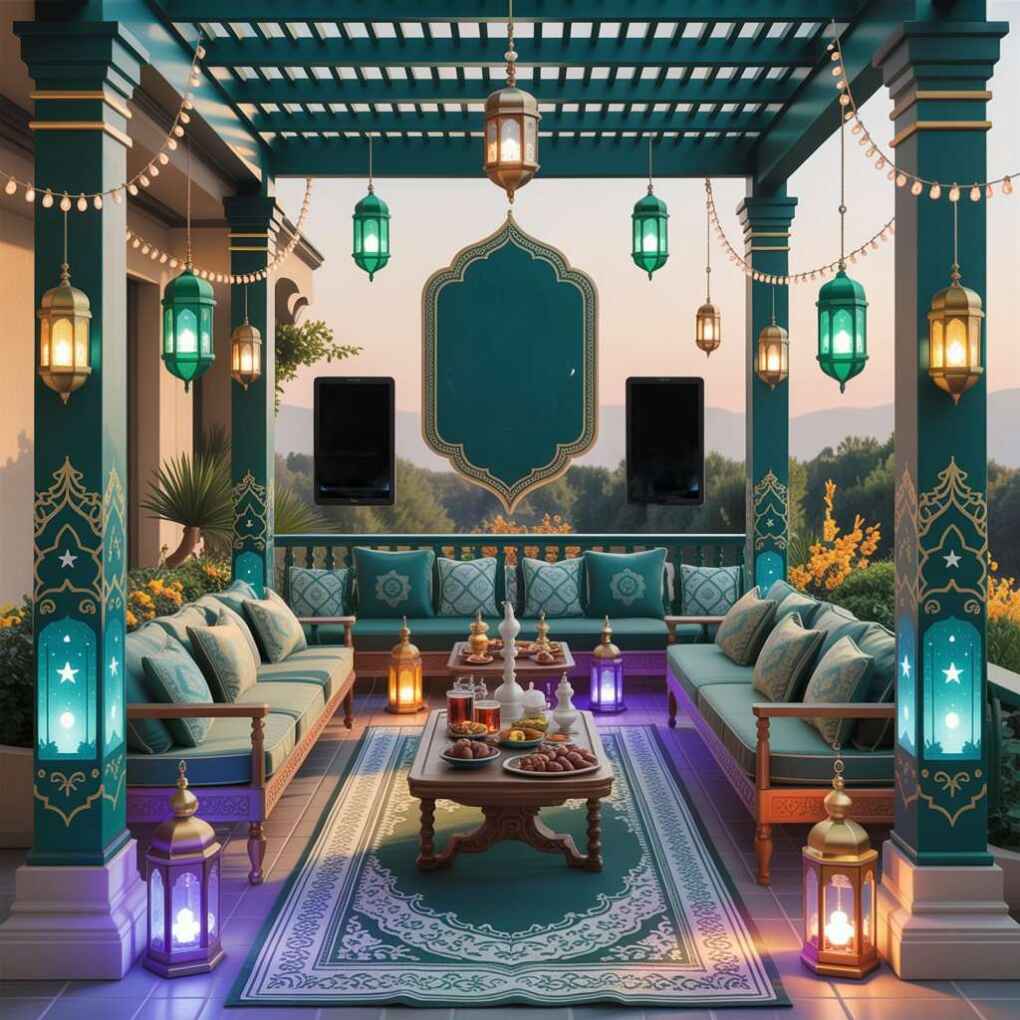
Pro Tip: Create a special “Ramadan playlist” of nasheeds and calming music that plays during evening hours to set the right atmosphere.
14. Sustainable and Reusable Decor
Eco-friendly materials that minimize waste while maintaining visual impact.
Choose decor items that can be used year after year without losing significance.
Incorporate natural elements that can be composted after use.
Support local artisans who create meaningful, sustainable products.
Sustainability aligns beautifully with Ramadan’s emphasis on mindfulness and stewardship. Choose decorations that can be stored and reused each year, reducing waste while building family traditions. Look for items made from natural materials like wood, cotton, or recycled paper that can be composted or repurposed after Ramadan.
Supporting local Muslim-owned businesses that create sustainable decor also embodies Ramadan’s spirit of community support and ethical consumption. Many small businesses now offer beautiful, reusable Ramadan decorations that honor tradition while being environmentally conscious.
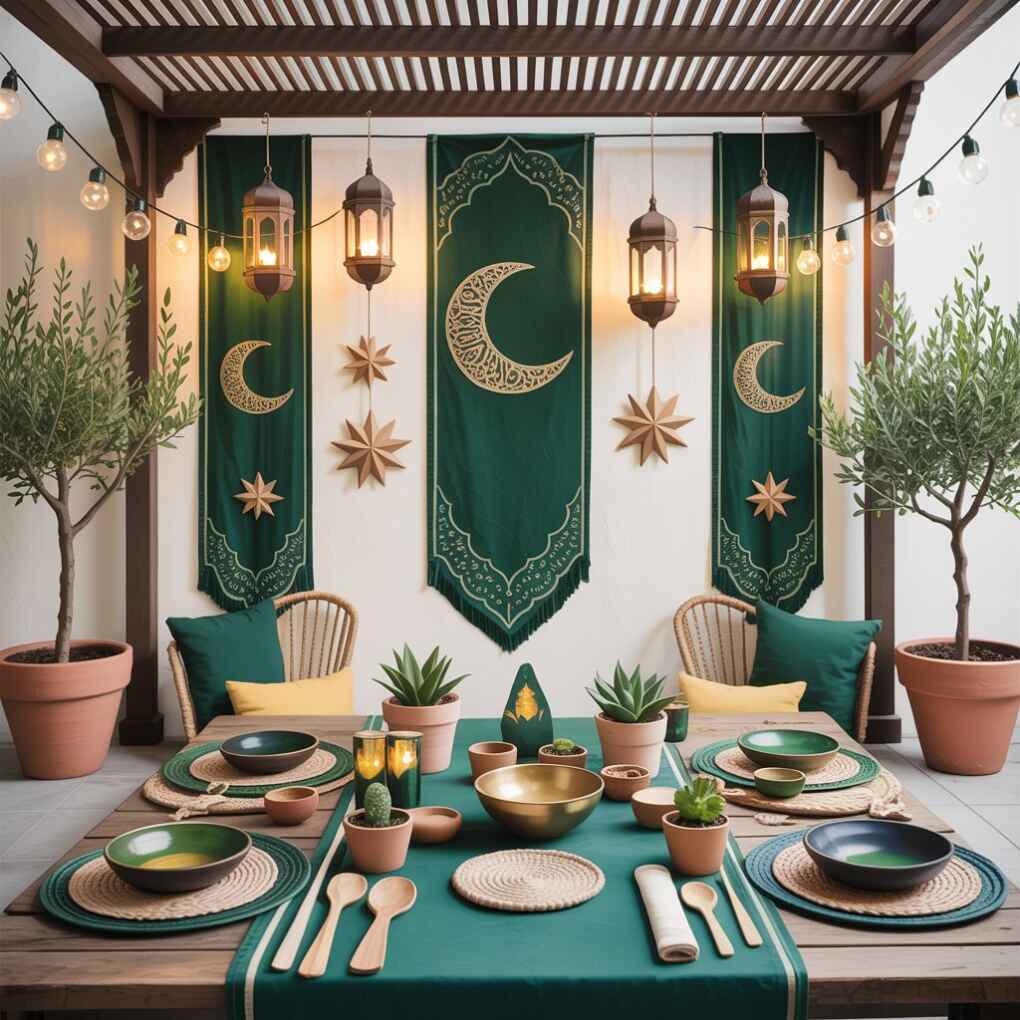
Pro Tip: Create a dedicated storage box for all your Ramadan decor items, labeled with “2024” so you can build a collection year after year.
15. Post-Ramadan Transition Plan
Design your decor with easy storage and transition in mind.
Create a “pack-up ritual” that marks the end of Ramadan and prepares for Eid.
Store items in labeled containers for easy access next year.
Reflect on what worked well to improve next year’s decorations.
The end of Ramadan shouldn’t mean a chaotic removal of decorations. Plan ahead with storage solutions that make packing up as meaningful as setting up. Create a transition ritual where family members help pack away decorations, reflecting on the month’s blessings and lessons.
Store your decorations thoughtfully in labeled containers that can be easily accessed next Ramadan. This approach transforms decoration storage into a reflective practice that extends the spiritual benefits of Ramadan into the coming year.
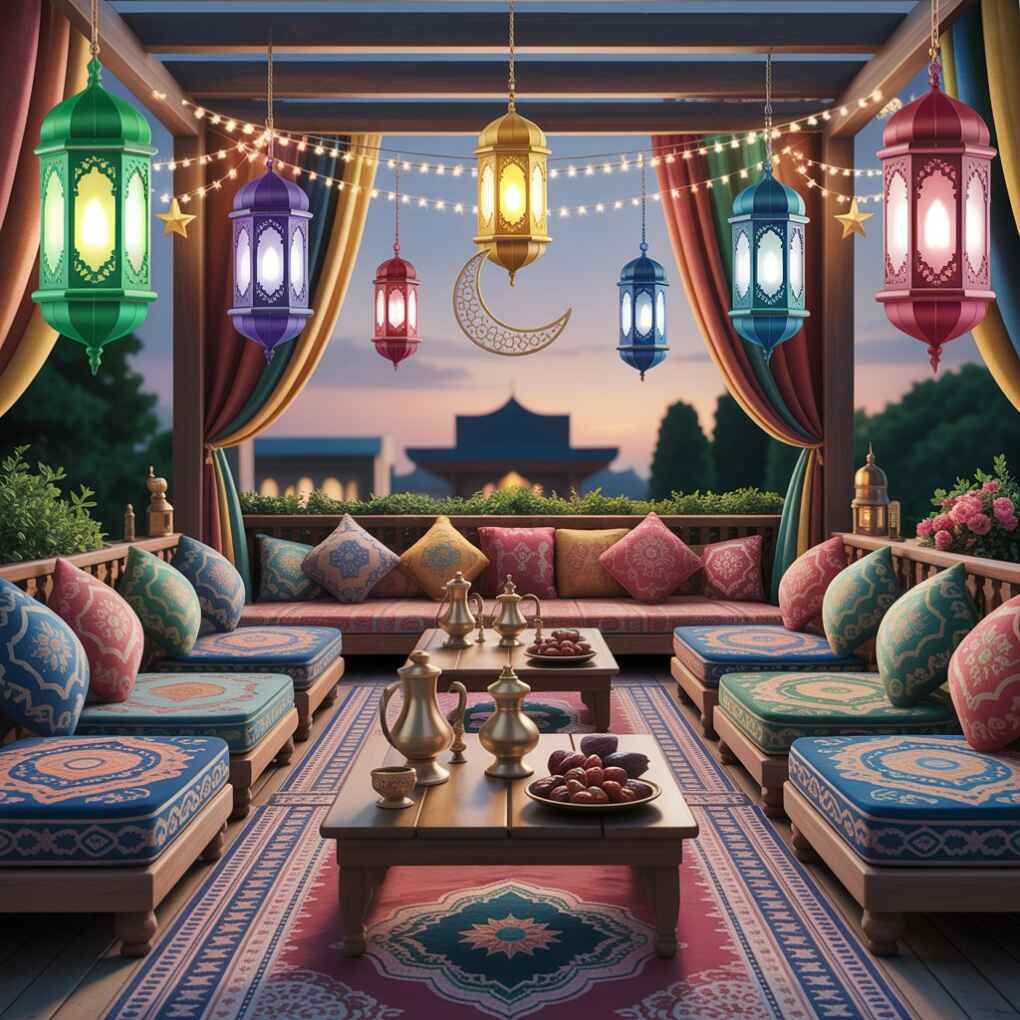
Pro Tip: Before storing items, take a family photo with your decorations to create a visual memory that you can reference when planning next year’s setup.
Embracing the Spirit of Ramadan in Your American Home
Your home should be more than just a physical space—it should be a reflection of your spiritual journey during Ramadan. These Ramadan decor ideas blend tradition with practicality, creating an environment that supports your spiritual goals while fitting seamlessly into your American lifestyle. Remember that the most important decoration is the atmosphere of compassion, generosity, and mindfulness that you cultivate within your walls.
As you implement these ideas, focus on what enhances your spiritual experience rather than creating unnecessary pressure. The true beauty of Ramadan lies not in elaborate decorations, but in the transformation of the heart. May your home become a sanctuary of peace, reflection, and joy this holy month.
“The best home is one where Ramadan is welcomed with preparation of the heart, not just the house.” — Guidance Residential guidanceresidential.com
For more inspiration, explore these resources:
- Stunning Ramadan Decoration Ideas to Glow Up Your Home in 2025
- Ramadan Kareem Decorations: 30 Ways to Elevate Your Home
- Ramadan Decor Ideas for Home
Meta Description: Discover 15 practical Ramadan decor ideas for American homes that blend tradition with modern aesthetics. Create a spiritually uplifting space with these accessible, culturally respectful decoration tips perfect for US households.
